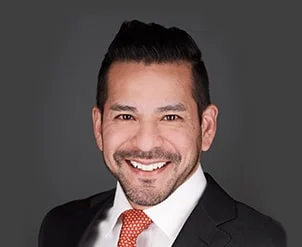The Color of Money in an Indiana Bankruptcy

Overall, bankruptcy filing numbers have declined significantly since 2003. However, the number of over-50 filers (gray bankruptcies) has increased almost 600 percent over that same time period.
A combination of a shrinking Medicare social net and aggressive medical bill collectors force many of these people into bankruptcy. Primarily, they file to take advantage of the automatic stay and debt discharge.
Section 362 of the Bankruptcy Code immediately stops all creditor and bill collector adverse actions. This stay usually remains in effect as long as the bankruptcy is pending. At the end of the case, a judge discharges most unsecured debts. The discharge eliminates the debtor’s legal obligation to repay the debt. So, no more bill collectors.
Bankruptcy Options for Older Adults
Since it combines the Automatic Stay with an expedited debt discharge, most gray bankruptcies are Chapter 7 bankruptcies. This debt discharge applies to most medical bills, credit cards, and other unsecured debts.
Chapter 7 puts people in control of their debts. As mentioned, Chapter 7 ends the repayment obligation. However, many people choose to voluntarily repay their unsecured debts, especially if they want to maintain their relationship with a certain doctor. These debtors may reaffirm the debt, or their attorneys might negotiate and obtain a lower repayment amount.
Most medical bill debt buyers are willing to make these deals. They know that if they refuse to compromise, the judge will discharge the debt, and the bill collector gets nothing. So, debtors, instead of creditors, hold all the cards.
Nearly all debtors qualify for Chapter 7. Their incomes must be lower than the average amount for that household size in that state.
Likewise, almost everyone qualifies for Chapter 13, which is the repayment plan bankruptcy. The debtor’s unsecured obligations must be less than $395,000, and the debtor’s secured obligations must be under $1.2 million.
Chapter 13 is a good option for people who are behind on their secured obligations, such as home mortgage payments, yet want to retain the collateral. Chapter 13 gives people up to five years to erase secured debt delinquency. Since the Automatic Stay usually remains in place, most moneylenders must accept the income-based repayment terms.
Special Issues in Gray Bankruptcies
Many people in this age group have large 401(k)s, IRAs, and other retirement nest egg accounts. These accounts are more than just numbers on a spreadsheet. They have an emotional value as well, because they represent long-term security and reward for financial sacrifice.
The Bankruptcy Code protects every nickel in these accounts, regardless of their value. The Supreme Court reaffirmed this exemption in 2014’s Clark v. Rameker.
Home equity may be a concern as well. People who have lived in the same home for more than fifteen years often have a substantial amount of home equity.
To maximize equity protection in bankruptcy, it is important to declare the house’s as-is cash value, as opposed to the house’s fair market value or tax appraisal value. Since the as-is cash value is usually much lower (most home investors initially offer pennies on the dollar), the equity protection under Illinois law often goes much further.
Connect with Assertive Lawyers
Gray bankruptcies often present unique legal and financial issues. For a free consultation with an experienced Chicago Chapter 7 bankruptcy attorney, contact the Bentz Holguin Law Firm, LLC. After-hours visits are available.
Resource:
nytimes.com/2018/08/05/business/bankruptcy-older-americans.html


